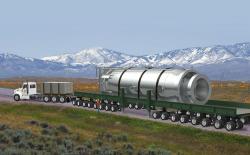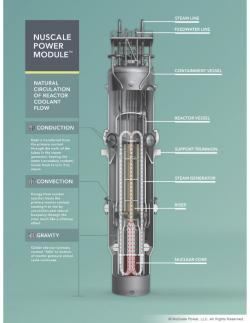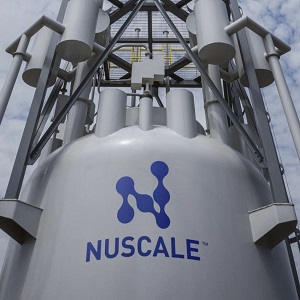Will nuclear modules provide hydrogen for hydrogen energy? Credit: NuScale.
–
As has been said many times, hydrogen energy would be great. Who wouldn’t want to work with fuel that burns water? All we have to do is get enough cheap hydrogen. Unfortunately, unlike fossil fuels, there are no hydrogen deposits anywhere nearby. Leaving aside the Sun, which is somewhat impractical in this regard.
In fact, there is a lot of hydrogen all around us. But it is bound in water and other molecules, from which it is very difficult to get it. Therefore, nowadays the vast majority of hydrogen used is obtained as a by-product in the processing of fossil fuels, which is somewhat unpleasant for a number of reasons. Another option is solar hydrogen generators, which in turn depend on sufficient sunlight. What with this?

Modular reactors are about to conquer the world. Credit: NuScale.
–
The creators of the new compact and modular NuScale Power nuclear reactors have recently come up with an interesting solution. According to their analyzes, a single small NuScale Power Module (NPM) could economically produce almost 50 tons of hydrogen per day. According to this study, conducted by experts from the Idaho National Laboratory, the use of modular nuclear reactors, which can provide a lot of energy, would also provide 20 percent more efficient treatment of water for hydrogen than with current technologies.

Modular nuclear reactor. Credit: NuScale.
–
According to NuScale, one of their NPMs generates 77 MW of electricity or 250 MW of heat. The great thing about modular technology of this type is that it is possible to install one, two, five or even a dozen modules, as needed, virtually anywhere.
The NuScale module produces hydrogen using electricity from superheated steam. The small nuclear reactor first heats the water to 300 ° C, while the steam temperature rises to 860 ° C. To do this, it uses about 2 percent of the reactor’s power (about 1.8 MW). The superheated steam travels to a high-temperature steam electrolysis system that acts as a fuel cell upside down. Thanks to thermal energy, water molecules in this system decompose into hydrogen and oxygen.
According to NuScale, this process is economically viable. If necessary, it will be possible to switch hydrogen production on or off in the modular reactor. NuScale also estimates that their single reactor can save about 168,000 tons of carbon dioxide emissions in one year of operation in this way. The company does not directly explain why a small modular hydrogen reactor should be better than, say, a conventional large nuclear reactor. But economically, it’s believable, and small reactors are more practical than large ones for many reasons.
Video: NuScale Test Facility Tours
Literature
– .


